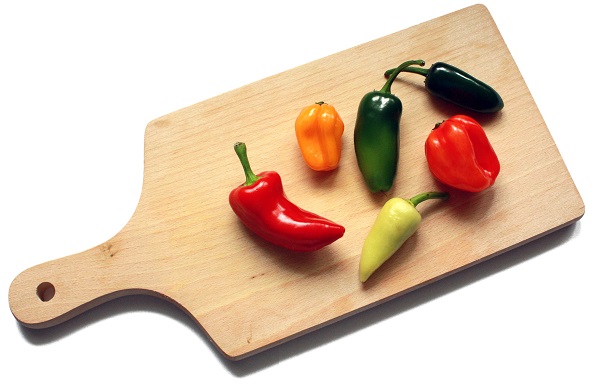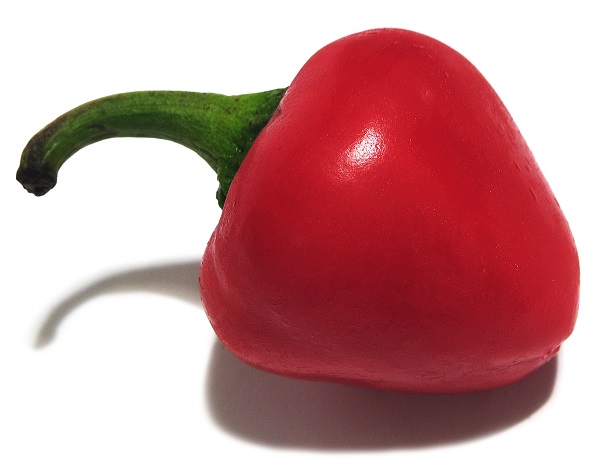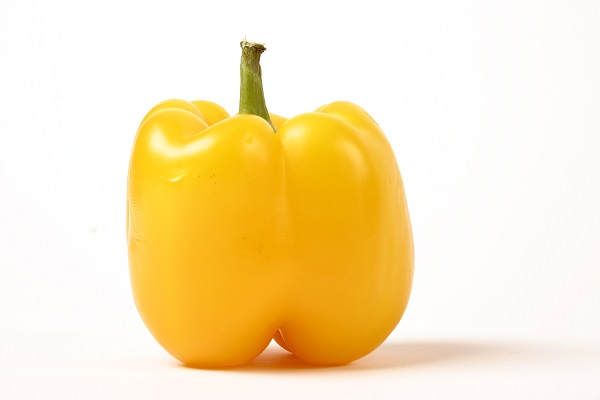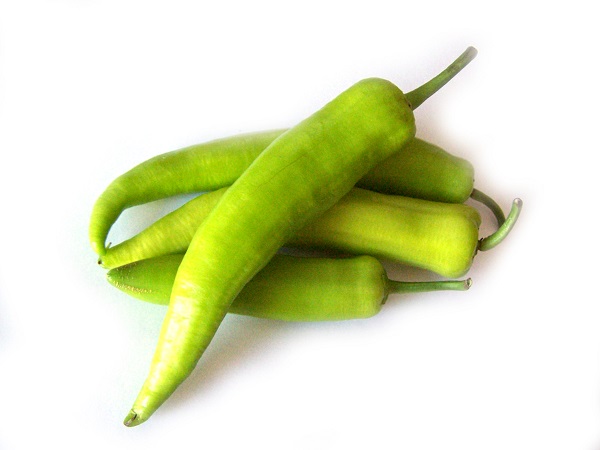The most common way to organize peppers is by the degree of their heat, or pungency. The chemical that carries the heat in pepper is called capsaicin, and its concentration determines just how hot a given pepper is.
The common measuring unit is a Scoville heat unit (SHU) developed by Wilbur Scoville, a pharmacist, in 1912. The heat ratings are assigned by the results of a panel of taste testers, not objective data.

How Hot is Hot?
To put heat into perspective, it’s best to look at some examples and compare:
| Type of Pepper | SHU |
| Bell Pepper | 0 |
| Pepperoncini, Banana Pepper | 100 – 900 |
| Pablano/Sriracha | 1,000 – 2,500 |
| Jalapeno/Chipotle | 3,500 – 8,000 |
| Serrano | 10,000 – 23,000 |
| Cayenne | 30,000 – 50,000 |
| Habanero | 350,000 – 500,000 |
| Ghost (Bhut Jolokai) | 855,000 – 1.5 million |
| Trinidad Moruga Scorpion | 1.3 – 2.2 million |
All Over the World
A member of the nightshade family of plants, chile peppers come from the genus Capsicum. They originated in the Americas and have been part of our diets for at least 9,500 years.
Chiles spread worldwide after Columbus’ exploits to the New World brought them to Europe. Later, Portuguese traders brought peppers to Asia. The Far East, in particular India, now leads the world in chile production.
The Internet has changed the distribution of specialty foods and within the past 20 years, far more products are more readily available, especially chiles. Shopping for exotic chiles is as easy as entering a few key words in a search engine.
Cinco de Mayo
With Cinco de Mayo around the corner, we are, of course, thinking about our menu and what we can do to take it out of the ordinary. Well, orchestrating your choices of fresh and dried chiles and other peppers is a sure-fire way to make your own unique creations.
Among the most common chiles used in Mexican cuisine are certainly the always-present jalapeño. The comparatively low heat of the jalapeño makes it the best candidate for adding a fresh, fruity flavor without overpowering heat.
The idea that size is a good way to estimate the relative heat of a particular chile is on target most of the time: The smaller the chile, the hotter the heat.
For example, a Serrano chile is thinner and shorter than a jalapeno, but it packs nearly 3 times the heat.
Habanero peppers are known for their scorching heat and rather floral, fruity flavor if you can get past the fire in your mouth.
New Mexican chiles, both fresh and dried, are often found in outdoor roasters at supermarkets and spun into decorative ristras throughout the Southwest.
One and the Same
Quite often, the name of a fresh chile of the same type will differ with the name of its dried version.
Jalapeño, for example, refers to the fresh green or red pepper. Chipotle, however, are jalapeños that have been smoked and dried.
Pablano peppers are known as Anchos when dried.
Preparation
Fresh chiles can be used whole, sliced, diced, or pureed. Roasting fresh chiles gets rid of the pepper skin that can turn bitter in cooking. You can roast the chiles in the oven, on a grill, or on a stovetop burner. The point is to completely blacken the peppers. Remove from the heat and place in a paper or plastic bag and seal tight to allow the pepper to steam and loosen the skin. After 20 to 30 minutes, remove from the bag and rub off the skins, split open, and remove the seeds and stems.
Dried chiles, however, should be soaked in warm water for about 30 minutes. You can remove the seeds and stems first, if you prefer. Soak the pepper in just enough water to cover. After the peppers are re-hydrated, puree them in a blender or processor. Push through a fine sieve to removed the skins. Reserve the soaking water for use in a sauce or other dishes.
Keep in mind that you can neutralize the heat of any chile by removing the ribs and seeds. Also, as a caution, it’s a good idea to wear rubber gloves when handling chiles. Your fingertips absorb the capsaicin, and even with frequent washings, trace amounts remain.

Resources
To learn more about chile peppers, check out:
- Chile Pepper Magazine, the most authoritative go-to periodical on the topic
- The Chile Pepper Institute, through New Mexico State University
What’s your favorite chile pepper to use? What are you planning to make with chiles for Cinco de Mayo? What’s your favorite recipe that incorporates chiles? And… have you ever eaten a pepper and regretted it?





Leave Your Response